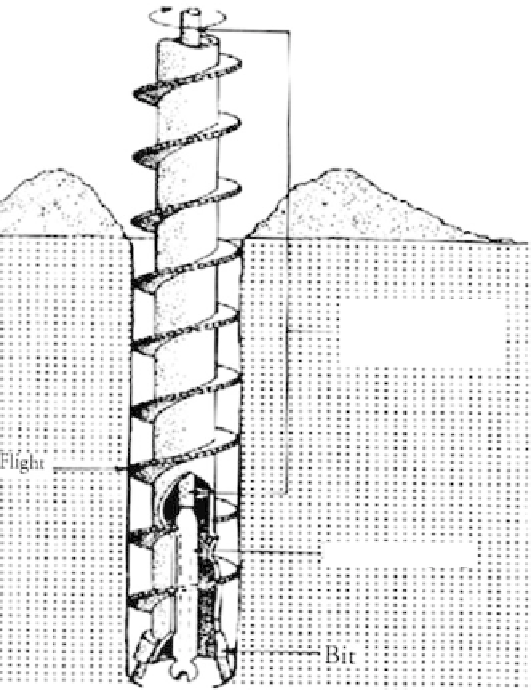Environmental Engineering Reference
In-Depth Information
Rod inside hollow
stem for removing
plug
Flight
Removable plug
FIGURE 2.54
Continuous flight, hollow-stem auger.
Plug at tip prevents soil from entering
the stem during hole advance.
Bit
soils, gravels, cobbles, or boulders. To save time, drillers may advance the stem without
the plug at the end. Below the water table, soils will rise in the hollow stem and sampling
results will be affected. Boring inspectors should always insist that the plug is in place dur-
ing hole advance.
Wireline Drilling
Wireline drilling eliminates the necessity of removing a string of drill rods for sampling
and coring and is therefore a very efficient method for deep core drilling on land or off-
shore. The coring device is integral with the drill rods, which also serve as casing.
Normally, it is not necessary to remove the casing except when making bit changes. The
drill string is a 4 to 6 in. pipe with a bit at the end. The drill string is rotated as the drilling
fluid is pumped down through it. (In offshore drilling, the mud, mixed onboard, is nor-
mally not recirculated, but rather flows up through the hole onto the seafloor.)
Soil sampling, rock coring, and
in situ
testing are carried out from the inner barrel
assembly
(Figure 2.82).
Core samples are retrieved by removal of the inner barrel assem-
bly from the core barrel portion of the casing drill rods. An “overshot” or retriever is low-
ered by the wireline through the drill rod to release a locking mechanism in the inner
barrel head. The inner barrel with the core is then lifted with the wireline to the surface,
the core removed, and the barrel returned to the bottom. In deep holes, it is necessary to
pump the inner barrel into place with fluid pressure. Wireline core diameters are given in
Table 2.14.




